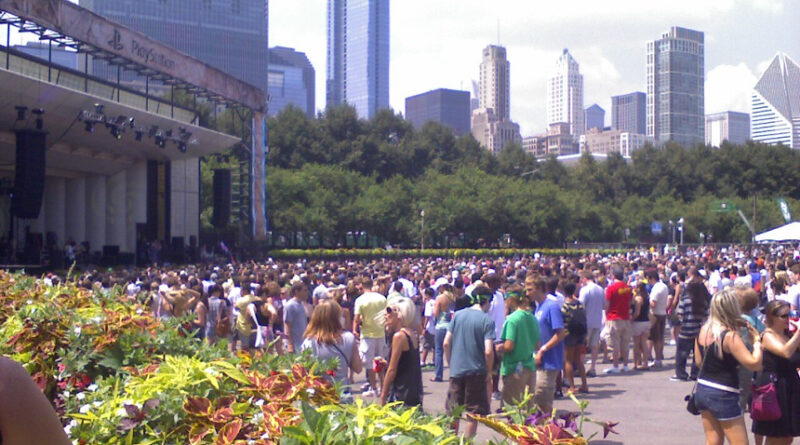Cooling Solutions For Cities That Lower Surface & Air Temperatures
Support CleanTechnica's work through a Substack subscription or on Stripe.

City surface and air temperatures are in critical need of cooling. That’s because 20 of the world’s largest capitals experienced 52% days with 95 degree Fahrenheit (35 degrees Celsius) over the past 3 decades. More than 300 million people live in these cities, where climate change has made them vulnerable, surrounded by asphalt and buildings that absorb and retain heat.
Mitigation strategies are clearly needed to reduce urban heat, particularly against a background of urbanization, anthropogenic warming, and increasing frequency and intensity of heatwaves.
Around 80% of the US population lives in urban areas. Concrete buildings, asphalt pulsing with heat, and a lack of greenery create heat islands in heavily populated areas, which can worsen the impact of hot weather. Then the sun sets, and the built structure breathes back out its stored warmth, replenishing the blanket of heat during the evening.
Urban heat island temperatures can be up to 11C (20F) hotter than less populated areas.
Los Angeles is one urban center that started taking action as early as 2013 to cool its air and surface temperatures. It passed a law requiring all new homes, non-residential buildings, and retrofits to have a cool roof. It also paints pavements white. These measures helped a bit, but issues linked to excess heat are still evident. A study found the number of extreme heat-related emergency calls in Los Angeles between 2018 and 2022 directly correlated with the number of days that were 32C (90F) and above.
The science behind how to cool down cities is established. Why are cities too often inadequately prepared or – even worse — disinterested in finding solutions?
What are Some Productive, Appealing Ways to Cool Urban Heat Centers?
Creating more city parks, brimming with verdant plants and low-hung shade, can be one of the best ways to lower surface and air temperatures for times of extreme heat. Because many people in the world do not have air-conditioning, creating welcoming outdoor spaces make sense on many levels — social, environmental, health, and technological.
Elie Bou-Zeid, a professor of civil and environmental engineering at Princeton, offers several suggestions to reduce air and surface temperatures.
- Misters: Small water droplets that quickly evaporate are sprayed into the air, cooling it. Then again, misters are wind-dependent. Too little wind? The droplets won’t all evaporate. Too much wind? The cooling effects dissipate.
- Wind regulation: To regulate wind speed, origamic architecture — a form of kirigami — involves 3-dimensional reproduction of architecture and monuments, on various scales, using cut-out and folded paper. Constructed from fabric and placed over misters, the structures maximize cooling or even form the roof of a pavilion, steering air into the structure.
- Cooling panels: Cold water pipes encased in a membrane repel humidity. The panels or “tubes” draw in heat from the bodies of people standing outside the structure, cooling those inside but not the surrounding air.
- Sun sails: Researchers say it’s important to reflect heat from solar radiation away from people and surrounding structures. Like shades seen at playgrounds or over bocce courts, white fabric is stretched over parts of a small or midsize park to provide cover and reflect the sun.
- Retro-reflective wall panels: These coatings bounce sunlight back toward the sky. In an urban pocket park, retro-reflective wall panels are connected to to nearby buildings, restrooms, or other freestanding structures.
“The opportunities for heat mitigation in the US are huge,” Steffen Lehmann, director of the University of Nevada’s Urban Futures Lab, told the BBC. “The knowledge is there, but the things that need to be done are not being done. But I am optimistic. Because there are things cities can do to cool down. And I do think there is a mindset-change happening.”
Here are some ways that city leaders are reducing air and surface temperatures.
- Depaving: Cities need to be designed like giant sponges that allow water to drain away safely. In its simplest iteration, a spongy city has planned green areas and permeable surfaces that absorb water during times of rainfall. The water seeps into an aquifer for later water use or evaporates and cools the city.
- Tree-planting: Well-established trees provide shade and cooling by evaporation and transpiration. Urban forests average 2.9 degrees Fahrenheit (1.6 degrees Celsius) lower than unforested urban areas.
- Bring me some shrubbery! Planting shrubs on roofs can help reduce the overall surface temperature. Actually, planting low maintenance and drought-tolerant plants that provide shade and reduce hardscaped areas are good measures in any urban environment.
- Botanical gardens: These refuges from the press of hot air and surface temperatures are not just beautiful — they can cool the city air by 5°C during heat waves,
- Green roofs: Also called a rooftop garden, these are vegetative layers grown on a rooftop that not only remove heat from the air through evapotranspiration but reduce surface temperatures of the roof. On hot summer days, a green roof’s temperature can be cooler than the surrounding air, whereas a conventional rooftop can be over 72F (40C) warmer.
- White roof: A clean white roof reflects 80% of sunlight and stays about 56F (31C) cooler on a summer afternoon. New York City recently coated more than 10 million sq ft (930,000 sq meters) of rooftops white, which is reducing internal building temperatures by 30%. Paint coating contains high concentrations of pigments which means the paint also has water-resistant and reflective properties. The coatings help pedestrians feel 1.5C (2.7F) cooler.
- Rainwater collection: Tucson, Arizona, runs a rebate program to reimburse residents up to $2,000 (£1,563) for installing rainwater collection systems, where the water could be used for trees and green areas.
- Energy efficiency assessments: Albuquerque, New Mexico, offers a community energy-efficiency program, where economically disadvantaged families are helped to maximize their energy efficiency in their home and lower their energy bills by around $300 (£233) a year.
Finally, a study in The Innovation analyzed how green spaces and waterways cool down cities and towns. They found that while success depends heavily on local factors, there were some general patterns. Among the key findings, the following green spaces and waterways cooled the air considerably:
- Wetlands: average -4.7°C; variation -1.2°C to -12°C
- Rain gardens: average -4.5°C; variation -1.3°C to -7°C
- Green walls: average -4.1°C; variation -0.1°C to -18°C
- Street trees: average -3.8°C; variation -0.5°C to -12°C
- City farms: average -3.5°C; variation -3.0°C to -3.9°C
- Parks: average -3.2°C; variation -0.8°C to -10°C
- Reservoirs: average -2.9°C; variation -1.8°C to -5°C
- Playgrounds: average -2.9°C; variation -2.8°C to -3°C
Of course, implementing a variety of strategies to reduce air and surface temperatures in global cities fails to account for one important point, as Mark Z. Jacobson, director of the atmosphere/energy program at Stanford University, told me in an email.
“The best solution is to eliminate emissions causing warming as fast as possible,” according to Dr. Jacobson.
Let’s make that one a priority in our attempts to cool urban heat centers, shall we?
 Sign up for CleanTechnica's Weekly Substack for Zach and Scott's in-depth analyses and high level summaries, sign up for our daily newsletter, and follow us on Google News!
Sign up for CleanTechnica's Weekly Substack for Zach and Scott's in-depth analyses and high level summaries, sign up for our daily newsletter, and follow us on Google News!
Have a tip for CleanTechnica? Want to advertise? Want to suggest a guest for our CleanTech Talk podcast? Contact us here.
Sign up for our daily newsletter for 15 new cleantech stories a day. Or sign up for our weekly one on top stories of the week if daily is too frequent.
CleanTechnica uses affiliate links. See our policy here.
CleanTechnica's Comment Policy

